As much as we would all like to think our ancestors lived in marital bliss, you will likely find the need to dig for a divorce record or two as you build your family tree. Many are surprised to find that divorces were relatively common in the past, and began being recorded earlier than expected.
In fact, divorce records can provide a highly prized source of information for researchers – since they often contain a surprising amount of detail, including elaborate statements about the events leading to divorce.
But don’t assume that simply searching for an ancestor on your favorite genealogy site will turn up a divorce record. While they are increasingly more available, many of these records are still offline, or exist in not yet indexed collections online, meaning they are not searchable. This short guide will help you find these important documents.
How to Locate Divorce Records for Your Ancestors in the United States
In the United States, divorce cases have historically been handled by local government, usually at the county level. Prior to the 1970s, people who wanted to get divorced were required to sue for it, based on legitimate reasons that were defined by state law. These reasons were referred to as “cause” and included adultery, abandonment, and physical abuse or cruelty.
Because such divorces were complicated and had to be based on cause, divorce rates remained less common until after World War I. Even so, the United States had the highest rates of divorce in the world by 1916.
Discovering Divorce Records Prior to 1867
Prior to the Civil War, divorces were not recorded as vital statistics in the United States. Divorces were handled by the court in charge of the area at the time. Some very early divorces were granted by state legislatures. Most divorces were handled by county courts as soon as the county was established. Sometimes federal circuit or district courts handled decrees as well.
Here is an example from the FamilySearch catalog:
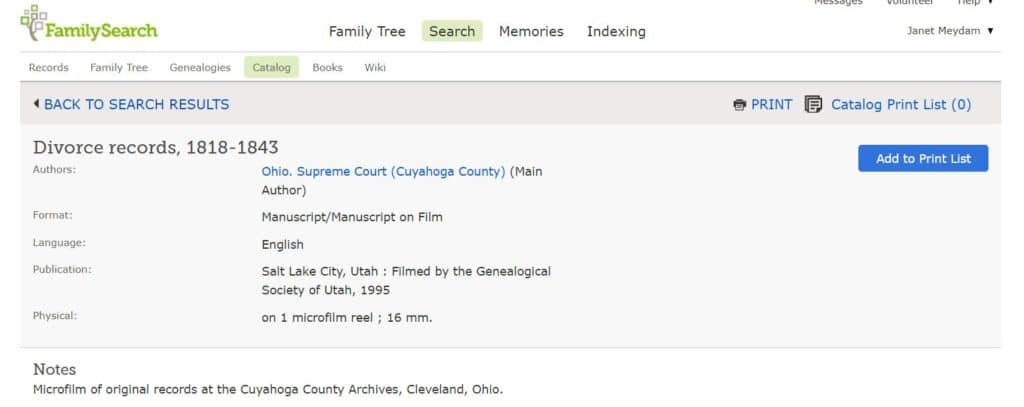
Some divorce records prior to 1867, however, have been compiled into collections or databases by other researchers. Here is a sample search from the Genealogy Center of the Allen County Public Library, Fort Wayne, Indiana, using the keywords “divorce records.”
Many of these books have not been digitized and must be viewed in person. You can use ArchiveGrid or its parent, WorldCat, to find out if a book of interest is available at a library near you – or search the catalog of the local or regional library in the area where the divorce took place to see if they exist.
This lack of online availability is typical for many old divorce records so you may like to read Family History Daily’s article The Vast Majority of Genealogy Records Still Can’t Be Found Online: Here’s How to Locate Them for help locating such collections. Our online courses also offer help in this area.
Despite a lack of general availability, there are some records from this time period online. Check out the Internet Archive first (see Family History Daily’s article about using this resource here).
To use this resource search for your state, county and the keywords “divorce” or “divorce records.” I was able to locate a collection of such records from three counties in Connecticut for the years 1719 to 1910 this way.
Here is a sample page:
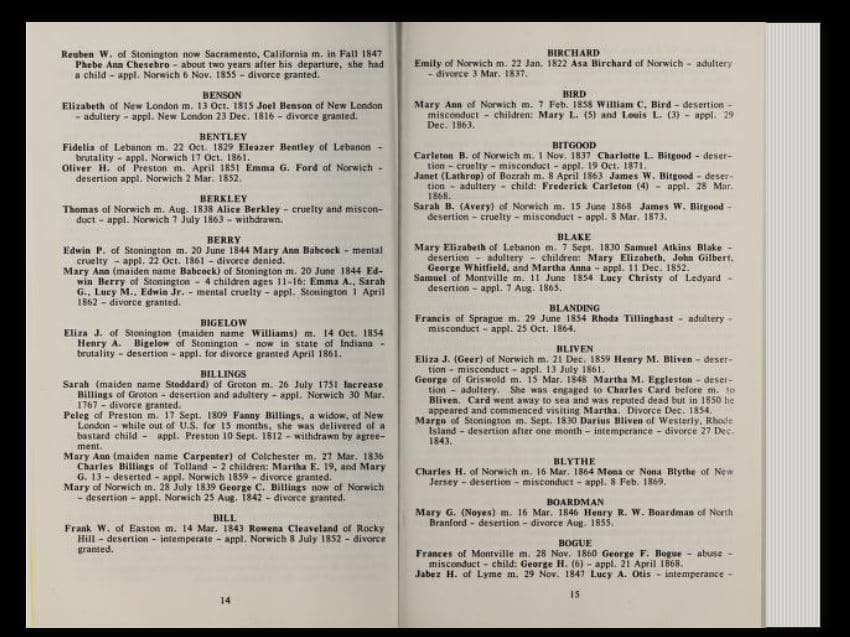
Divorce Records after 1867
Above is part of the 1894 divorce record of Melinda and Arthur Click from Montana, as found on Ancestry. Note the detail.
In 1887, the United States congress ordered that divorce statistics in the United States be compiled back to 1867. This was part of an effort to combat the growing divorce rate at the time. Because of this action, divorce records after 1867 are easier to locate than earlier records.
A search of online divorce records at FamilySearch pulls up 4000+ results, many of which are county or circuit court records from 1867 and later, although many collections do include those before this time.
I had the best luck locating these collections on FamilySearch by just typing in the keyword “divorce” and searching through the result, rather than typing in a place name. You may also choose to search by title to get more specific results. You will also need to filter for online results only to get those that are either searchable or browsable through the FamilySearch site. Help for how to best use the FamilySearch catalog can be found in our 30 Day Research Challenge.
Here is a sample when searching by title for the word divorce:
These records vary in the amount of detail they provide, but usually include the ages of the two individuals involved, the date of marriage, the dates of petition for divorce, the cause of the divorce, and the outcome. Court records often include the transcript from the court hearing, which will give you the most detail about the divorce and the people involved.
The best way to locate which databases are available online per area is to look at the online card catalogs for each of the major genealogy research sites – such as MyHeritage and Ancestry. These catalogs display collections by name, location and number of records and can be searched by title easily, and then by person.
You may also find browse-only records here that will not come up in a search for your ancestor because they have not yet been indexed.
When looking for individuals in more general and combined databases, try entering your ancestor’s name along with the word “divorce” in the keyword box. Terms such as decree, annulment and dissolution are also important to remember when searching for these types of documents. You can also use Google to search for divorce records in locations you are interested in.
Additional Resources for Finding Divorce Records
There are a couple of other places you can check for information pertaining to divorces. If your ancestor was a civil war veteran, any divorce that occurred will be referenced in his civil war pension record. This was so that the divorced spouse could not claim pension funds after the veteran’s death.
Old newspapers also sometimes provide information about divorces. People often placed ads or requested articles regarding their spouses to document cause for a divorce. This transcription of an article posted on WIGenWeb shows such a case:
While this article probably made the paper due to the extreme actions of the spouses involved, other articles regarding spouses’ actions, especially abandonment, can be found in the personal or social sections of old local newspapers.
Also check out the free genealogy resources found in 50 Free Genealogy Sites for more places that hold original, indexed or transcribed divorce records.
Finding divorce records can be a bit tricky and time consuming, but the information you can obtain is worth all the work. Good luck with your research!
By Janet Meydam. Janet is a freelance writer who has over 40 years of experience in genealogy research. Her knowledge includes researching many different records from the United States, Germany and Poland.
Image: Section of Hawaii divorce record from Ancestry.com’s “Hawaii, Divorce Records, 1848-1892.”
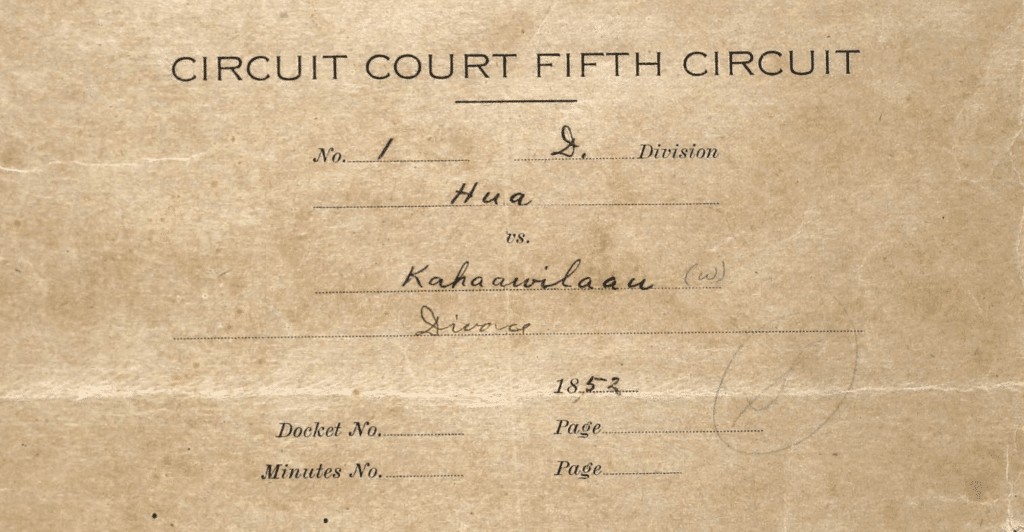
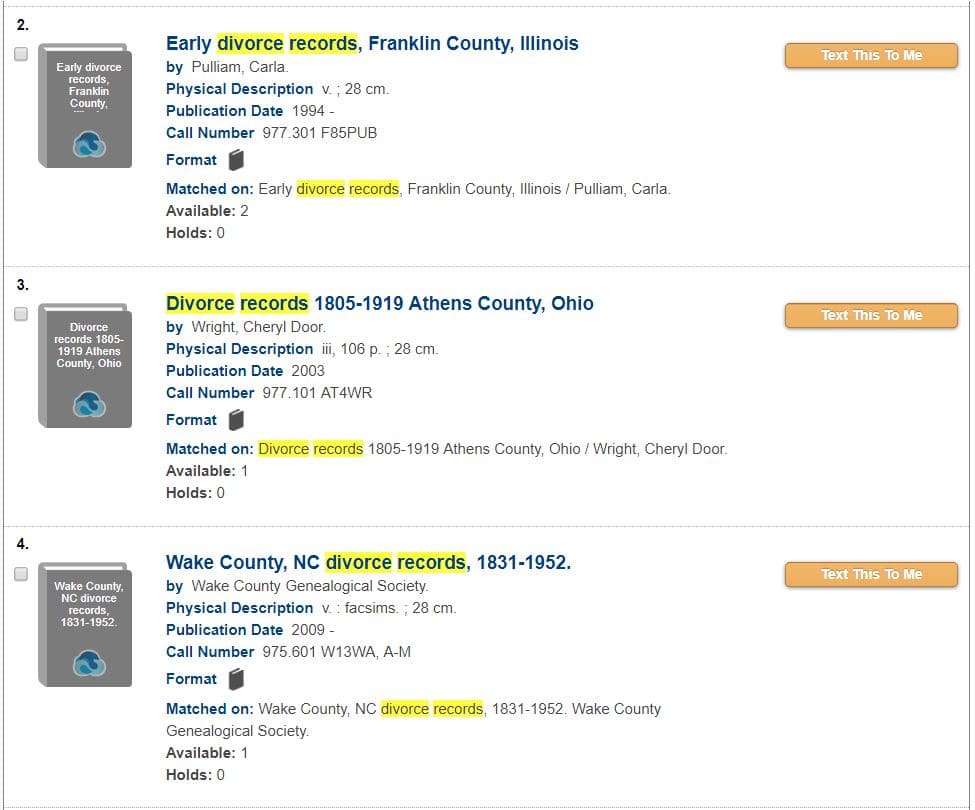
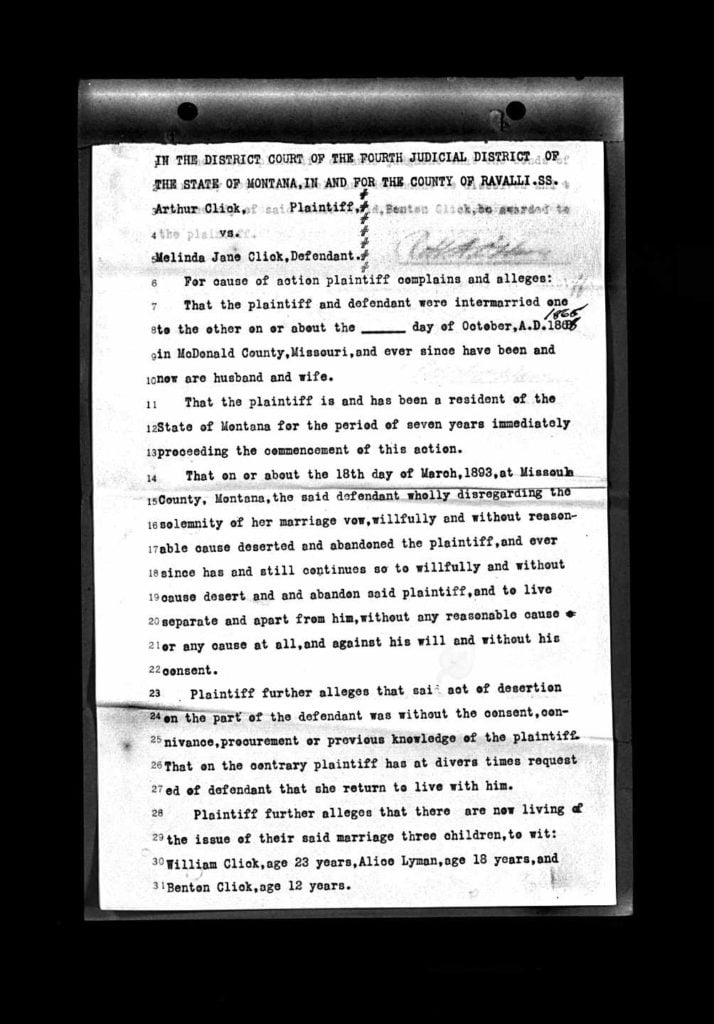
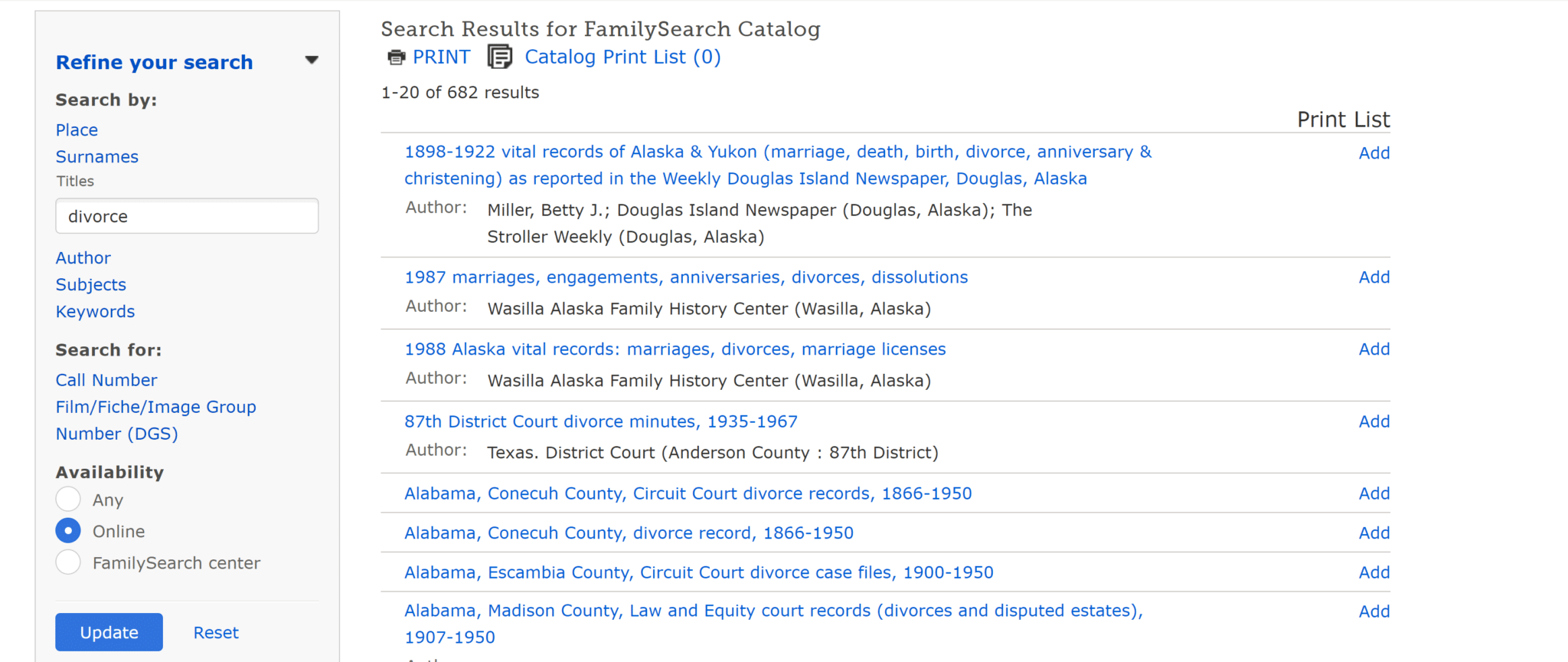

I don’t suppose you’d want to elaborate on where you found that divorce image? I won’t go off on a wild goose chase for someone I don’t know just so I can see other records in that collection.